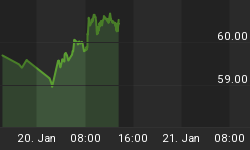Below is an excerpt from a commentary originally posted at www.speculative-investor.com on 5th June 2011.
All of the major central banks hold currency reserves in the form of gold or other national currencies, but it is not strictly true that these reserves "back" the associated currencies. For example, if the US' gold reserves or Japan's US$ reserves disappeared tomorrow, the US$ and the Yen wouldn't be worth any less than they are today. What, then, backs today's fiat money?
That's a trick question, because money isn't backed by anything. Money is what it is -- the most commonly used final means of payment within the economy. For example, when the US was on something close to a genuine "gold standard" during the last quarter of the 19th Century, gold was money and the gold wasn't backed by anything. Pieces of paper known as dollars circulated within the economy during this period, but the paper dollars weren't money; rather, they were receipts for money (gold) held in a vault somewhere. Of course, banks created more receipts for money than there was actual money, but this fraudulent practice -- known as fractional reserve banking -- is a separate issue.
Some people will no doubt argue that gold money wouldn't need to be backed by anything because gold has "intrinsic value", whereas paper or electronic money needs to be backed by something because it has no "intrinsic value". The problem with this line of thinking is that gold and paper money have exactly the same "intrinsic value": zero. All value is subjective. What, for instance, would gold bullion be worth to you if you were stranded alone on a desert island with no hope of ever being rescued? In that situation, a tree that provided a steady supply of coconuts would probably have a lot more value to you than one million ounces of gold. However, if you were living in a modern economy and the government was acting in a way that was guaranteed to destroy wealth and substantially reduce the purchasing power of the official money, gold would probably be very valuable to you. The point is that the value of any object is in the eye of the beholder; it is never inherent in the object.
Once something has taken on the role of money, its value, like the value of everything else, will be determined by its supply relative to its demand. The difference is that with money it really comes down to supply, because while changes in demand are often important on a short- or intermediate-term basis the long-term trend in the purchasing power of money will almost always be dominated by the change in the money supply*. Given that under today's monetary system the central bank determines the long-term growth rate in the supply of money, it is fair to say that the central bank (the Fed in the US) is by far the biggest influence on the value of modern money. However, the central bank is really just a tool of the government and the banking system, so if we take a step back we can see that the ability of today's money to maintain its usefulness as money is largely dependent upon the policies/actions of the government and the major private banks.
Therein lies the problem. The problem isn't that today's money is not "backed" by much in the way of reserves; the problem is that the value of YOUR money is determined by the actions of ethically-bankrupt institutions.
*Note that we aren't implying, here, that there is a linear relationship between changes in the money supply and changes in money purchasing power, because that definitely isn't the case. Changes in the money supply have a non-uniform effect on prices within the economy, and there are often long and variable delays between changes in money supply and the resultant changes in money purchasing power. We are simply saying that the long-term shift in a currency's purchasing power will primarily be determined by the change in its supply.
We aren't offering a free trial subscription at this time, but free samples of our work (excerpts from our regular commentaries) can be viewed at: http://www.speculative-investor.com/new/freesamples.html















